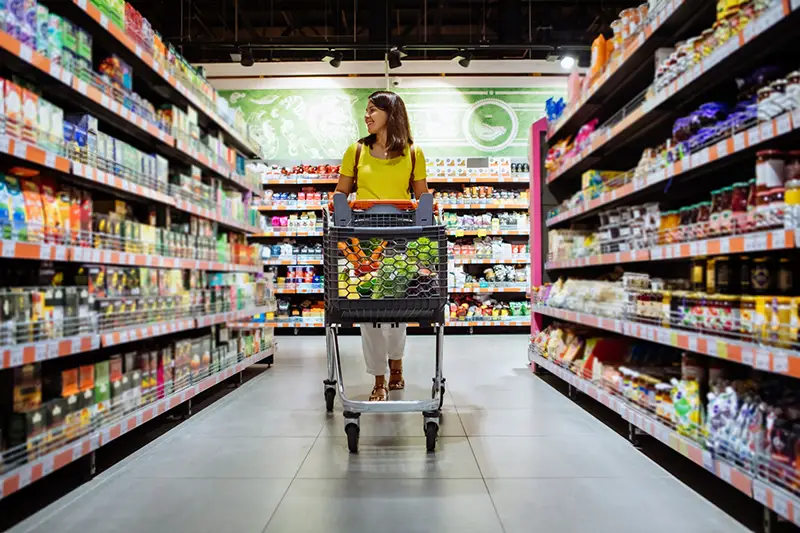Click here to get this post in PDF

The right lighting can not only enhance a product’s appearance but also affect consumer behavior, potentially leading to increased sales. Understanding the ways lighting affects purchases in grocery stores can empower store-owners to make strategic decisions that amplify their revenue.
The Effects of Warm vs. Cool Lighting
Lighting temperature plays a pivotal role in setting the mood of a grocery store and influencing customer perception. Warm lighting tends to create a welcoming atmosphere, making products such as bread, pastries, and produce appear fresher and more appealing.
On the other hand, cool lighting is ideal for displaying dairy and frozen-food items, as it highlights their freshness and cleanliness and makes their colorful packaging pop within a refrigerator case. Using warm and cool lighting throughout different sections of the store can guide customer movements and purchasing decisions.
The Importance of the Color Rendering Index
The color rendering index (CRI) measures the ability of a light source to accurately reveal the colors of objects in comparison to a natural light source. High-CRI lighting is crucial in grocery stores because it makes products look more natural and appealing.
Fruits and vegetables under high-CRI lights appear fresher and more vibrant, encouraging customers to buy more. Similarly, meat and fish also benefit from high-CRI lighting, which can enhance their natural colors, making them appear more appetizing.
Special Concerns Regarding Cooler Lights
Cooler lights, especially LEDs (light-emitting diodes), offer several benefits worth noting. First, LEDs don’t contain mercury, making them safer choices for illuminating food products. They also produce low or no heat, which is particularly beneficial for areas displaying temperature-sensitive items. This characteristic reduces condensation, ensuring that packaging remains clear and attractive inside the cooler case while maintaining optimal conditions for perishable goods.
LED Lights for Energy Conservation and Cost Savings
Adopting LED lighting in grocery stores offers significant energy-conservation benefits, leading to substantial cost savings overall. LEDs consume significantly less power than traditional lighting systems and have longer life spans, reducing energy bills and maintenance costs. Plus, promoting your store as using sustainable practices can attract customers who value environmental responsibility.
Energy efficiency doesn’t have to come at the expense of lighting quality, either—LEDs provide excellent illumination to enhance product displays. Shoppers will appreciate being able to examine their choices under good lighting when making purchase decisions.
Moreover, LED lights can be positioned to highlight highly profitable items and specialty sections of the store. LEDs also have the potential to increase the overall time that shoppers spend in the store. The greater the “dwell time,” the better the chances of making additional sales.
The effects of lighting on purchases in grocery stores extends beyond mere visibility. Lighting temperature, color accuracy, safety considerations, and energy efficiency all play critical roles in creating an environment that encourages purchases. By carefully selecting and implementing the right lighting solutions, such as LEDs, grocery stores can improve the shopping experience, highlight the quality of their products, and increase sales. This strategic approach to lighting not only benefits the store’s bottom line but also contributes to a more pleasant and productive shopping experience for customers.
You may also like: Lighting the Way: A Guide to Mid-Century Modern Floor Lamps
Image source: Depositphotos.com
